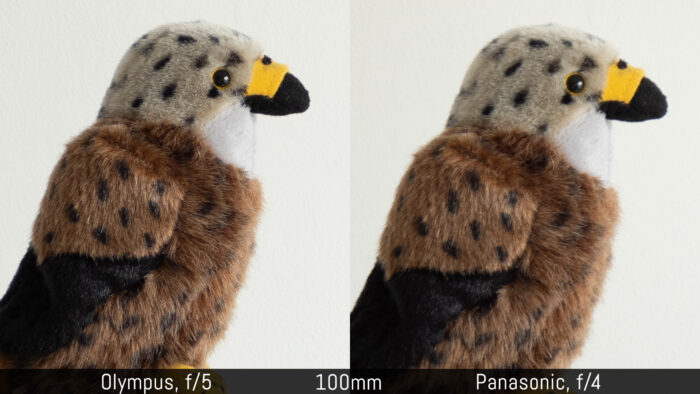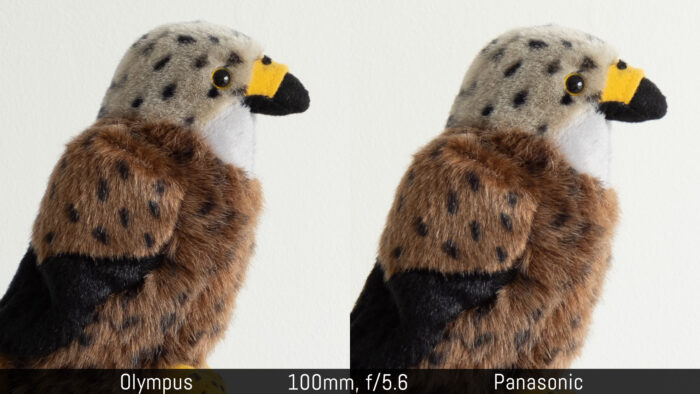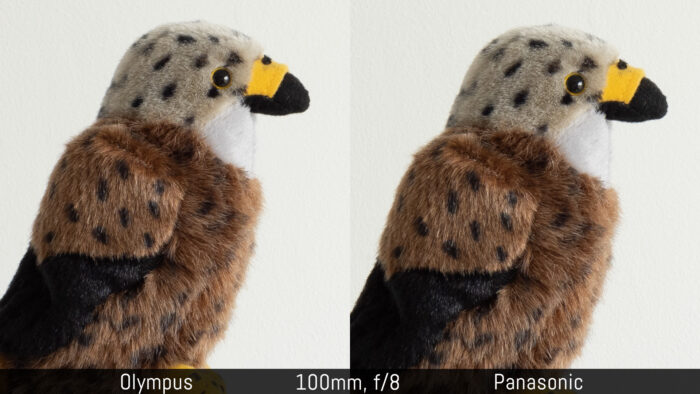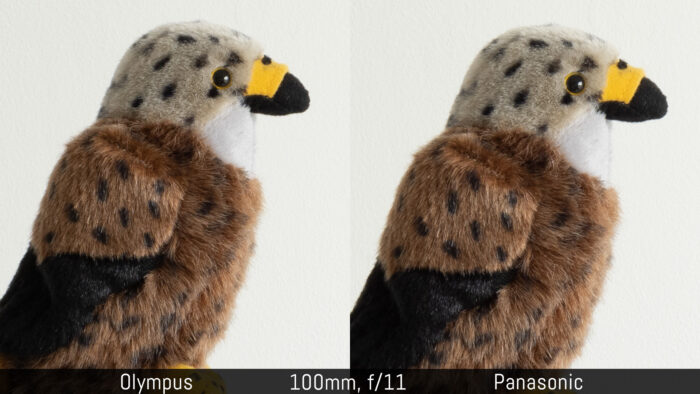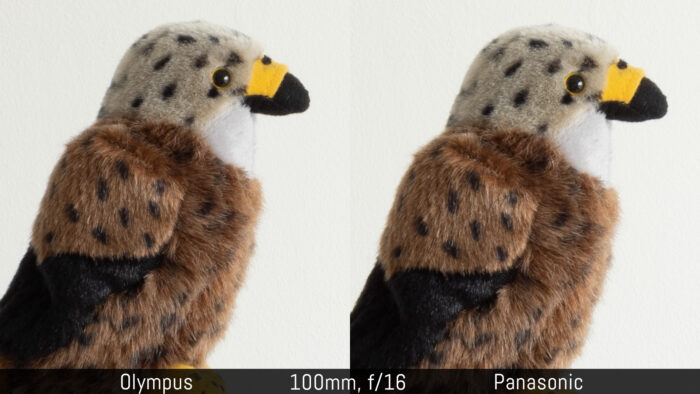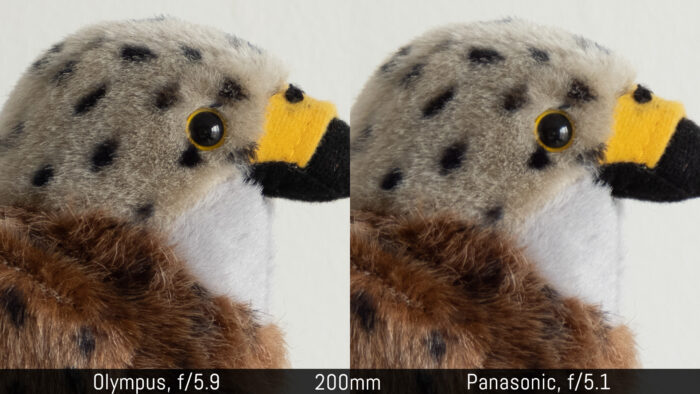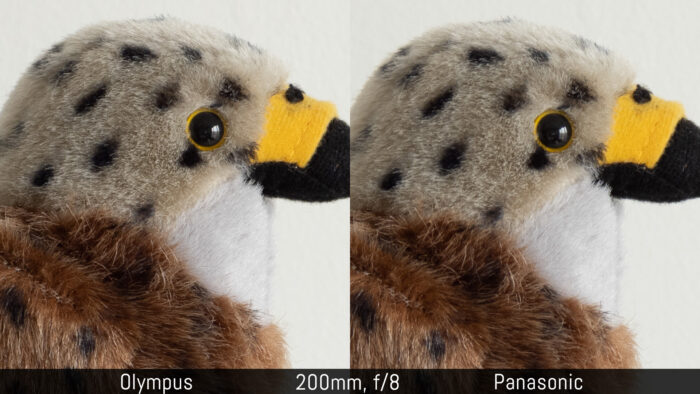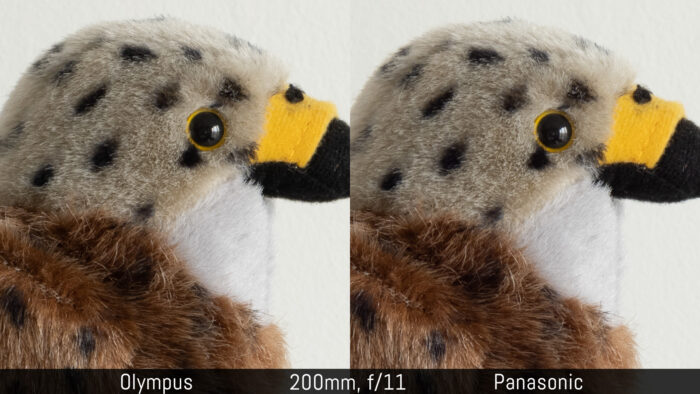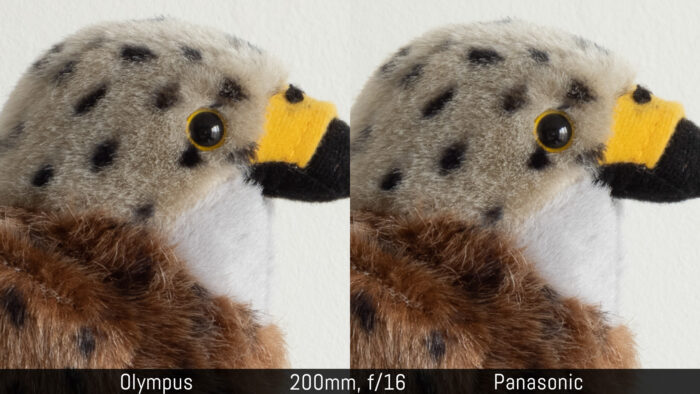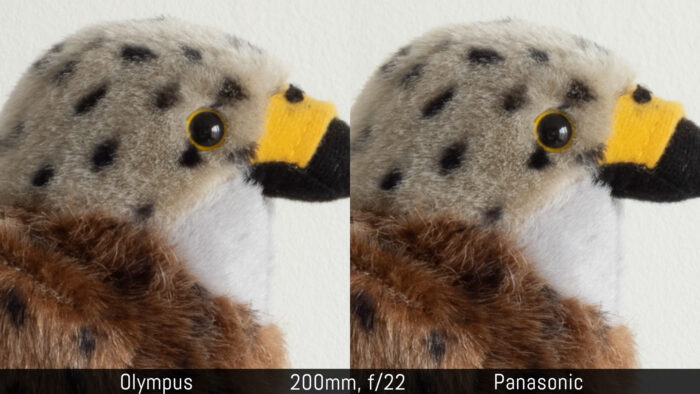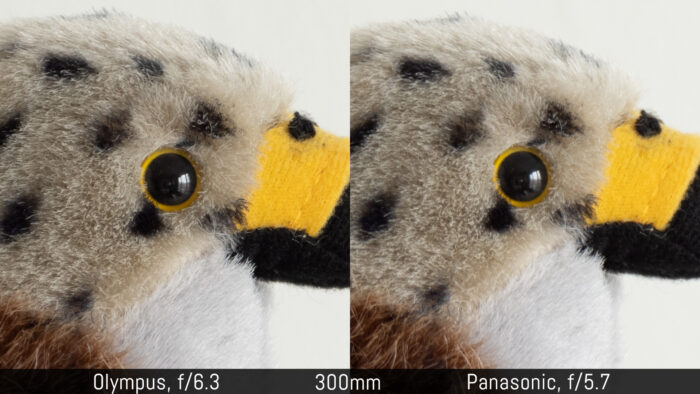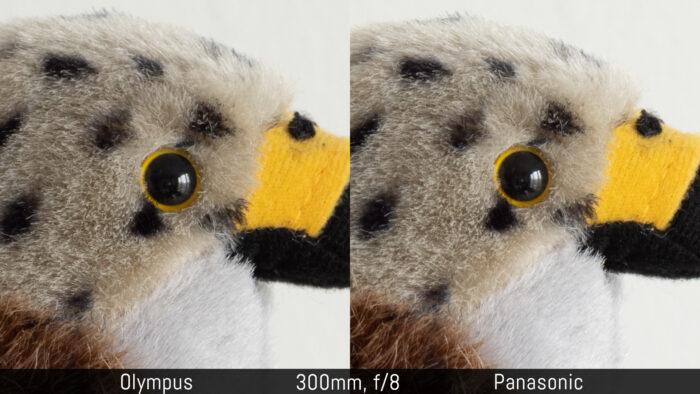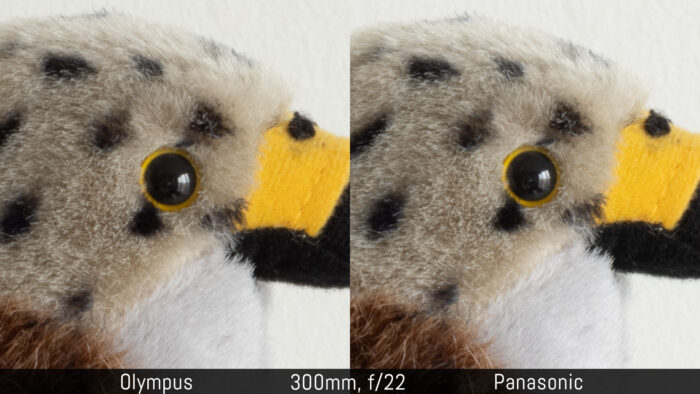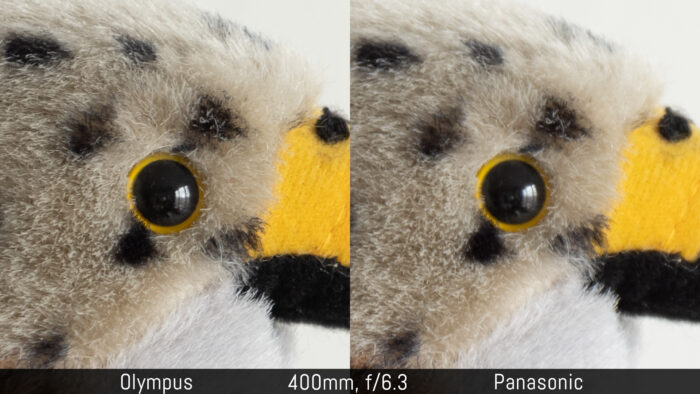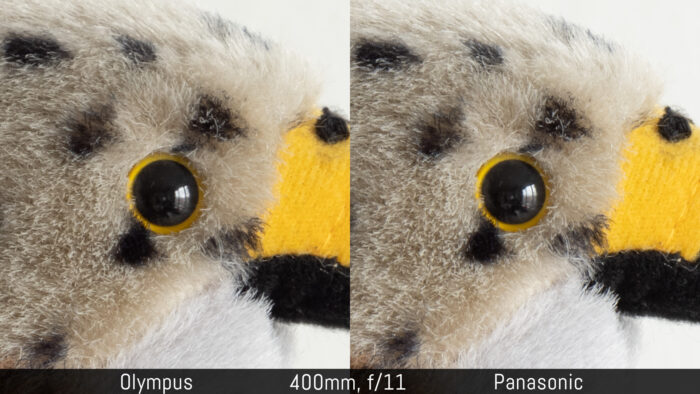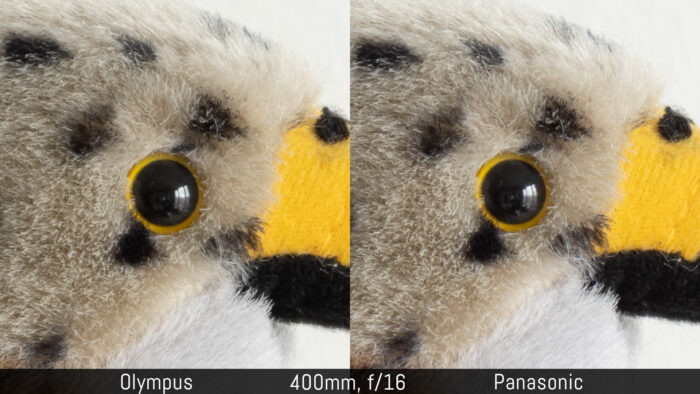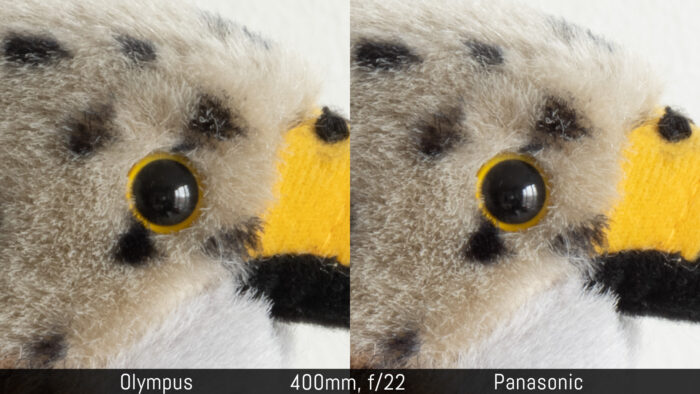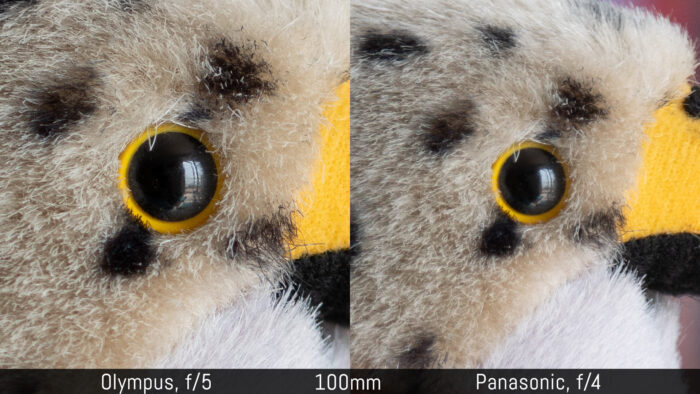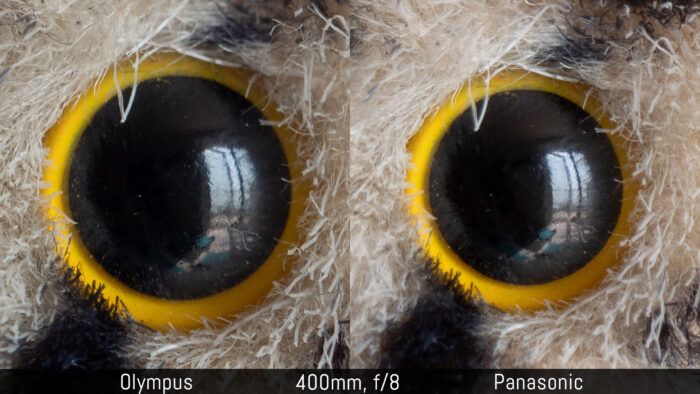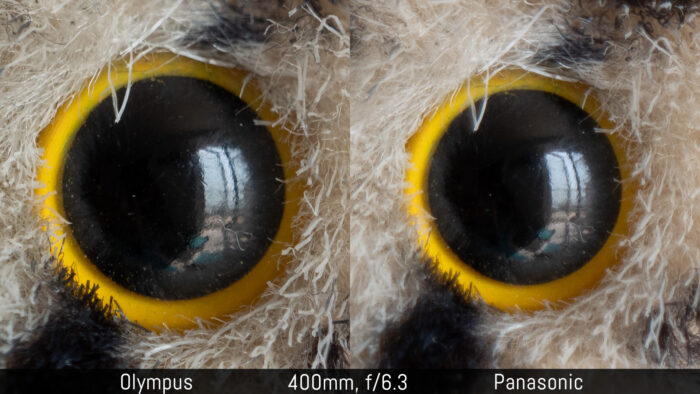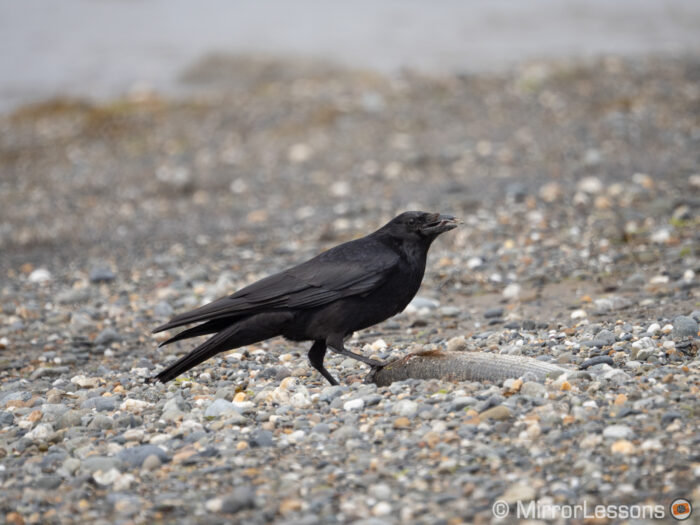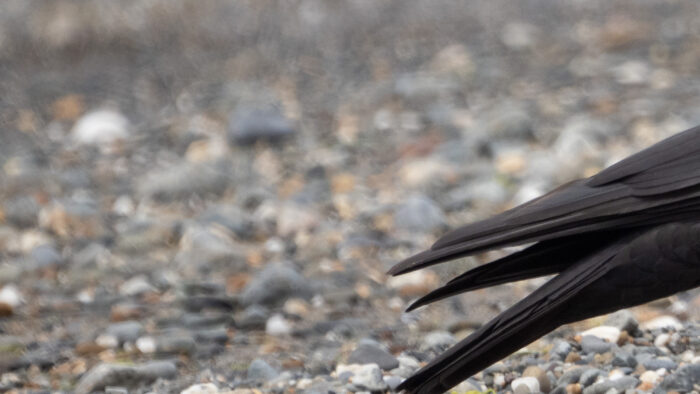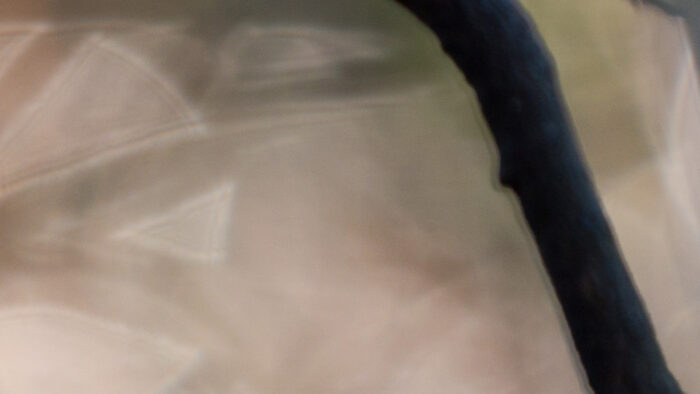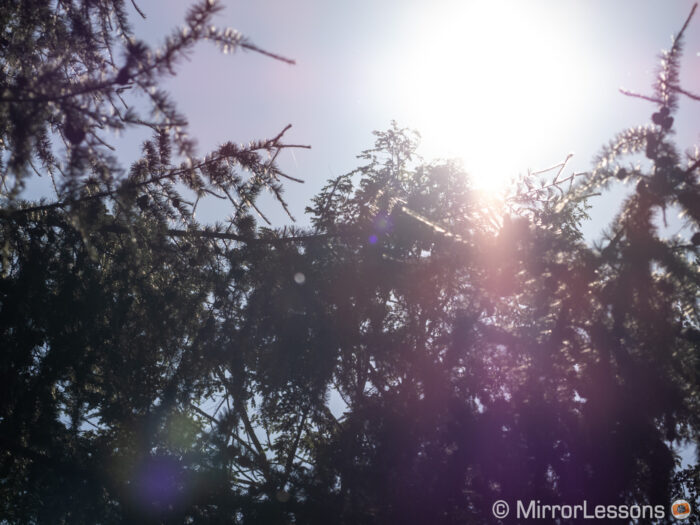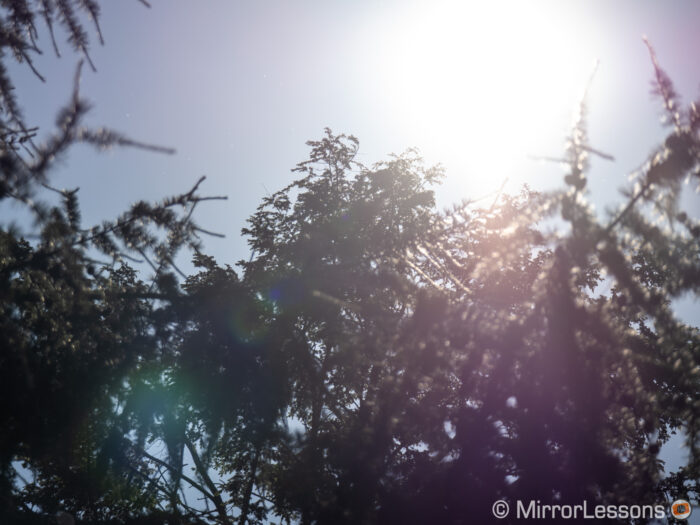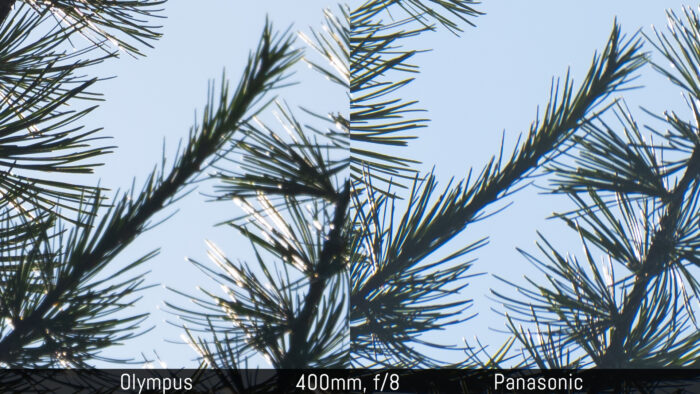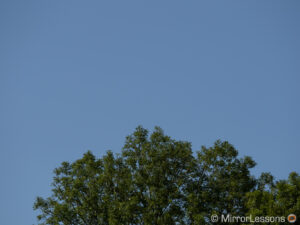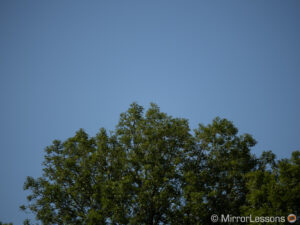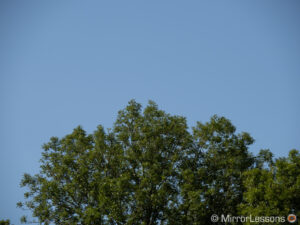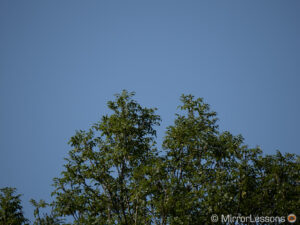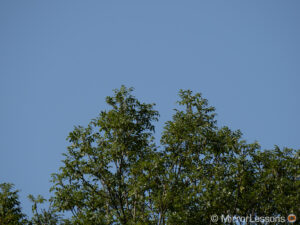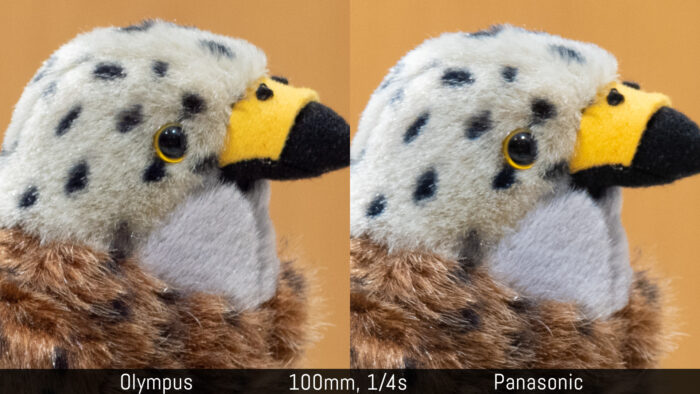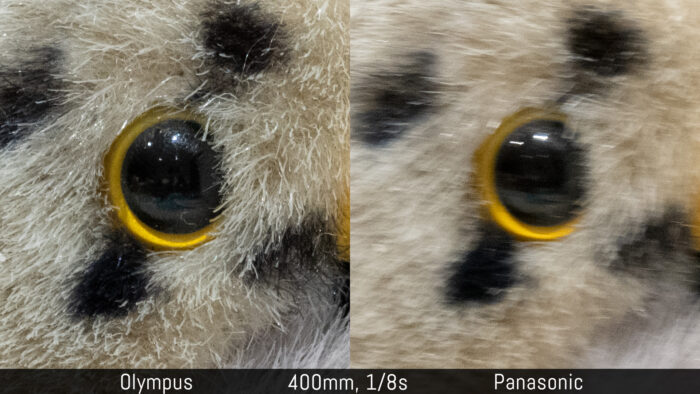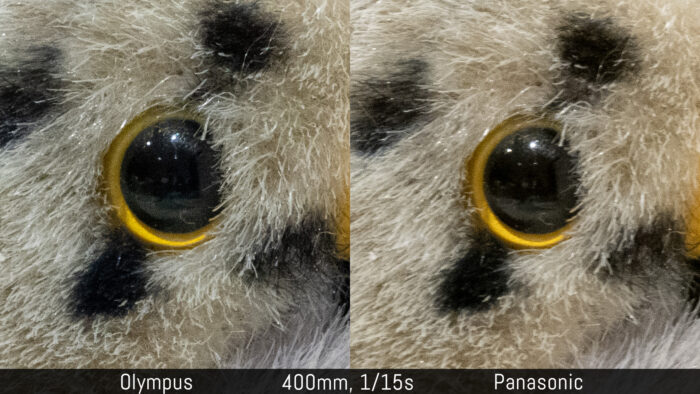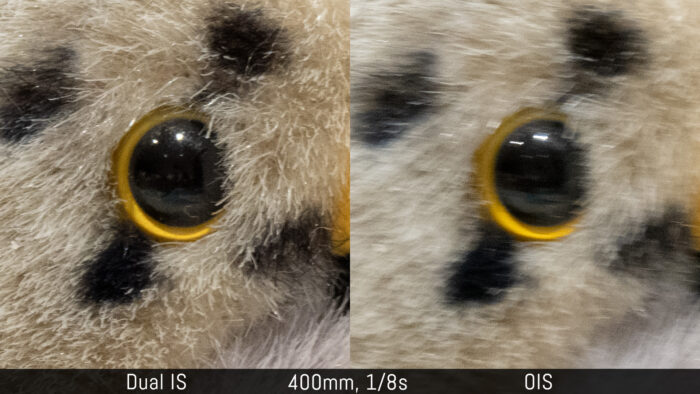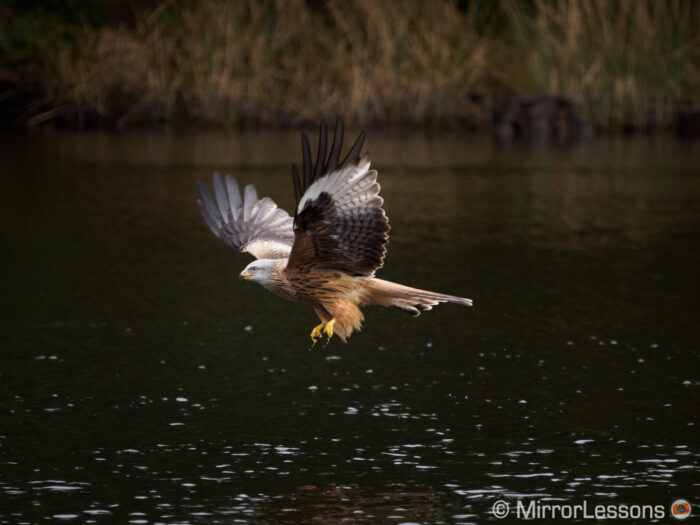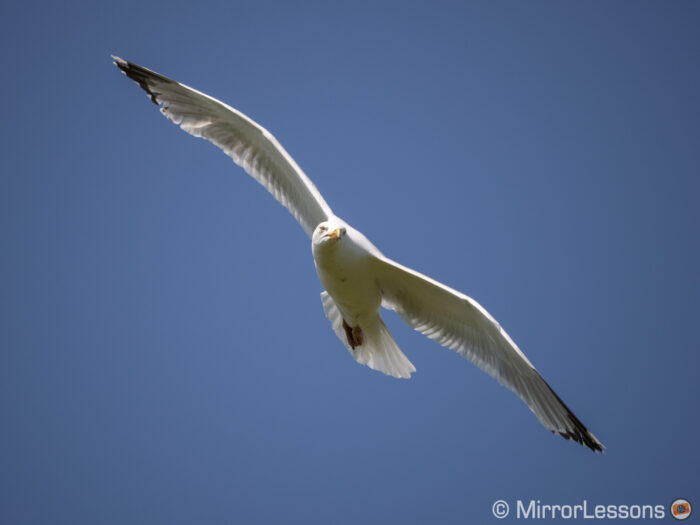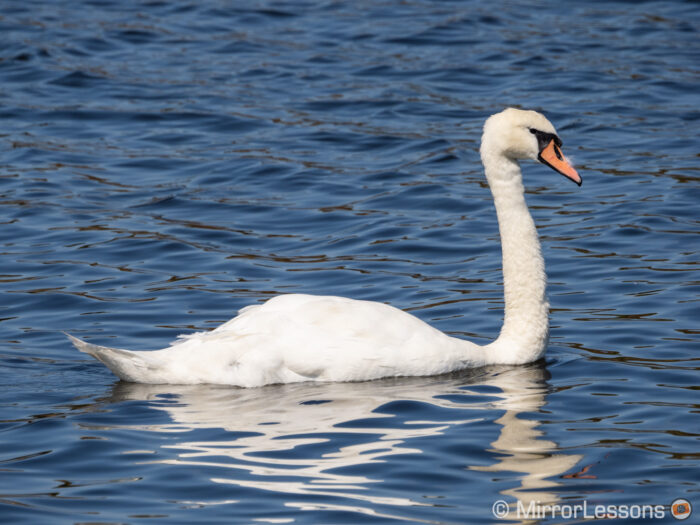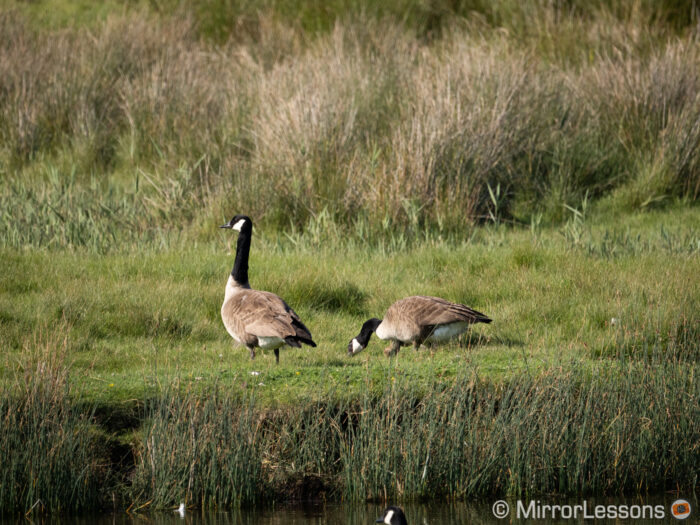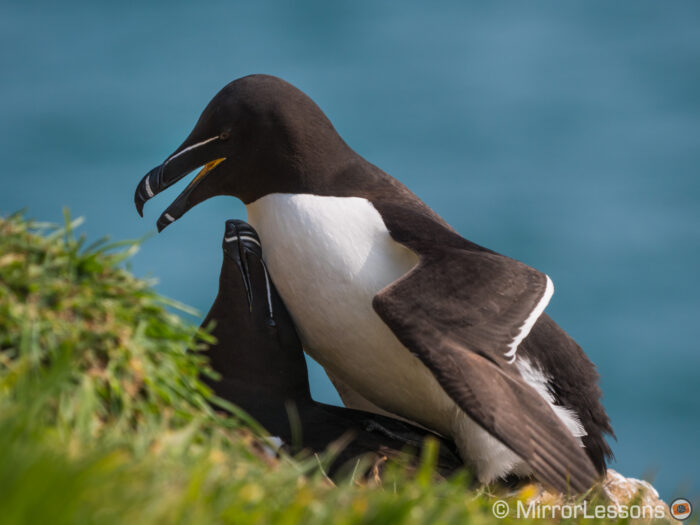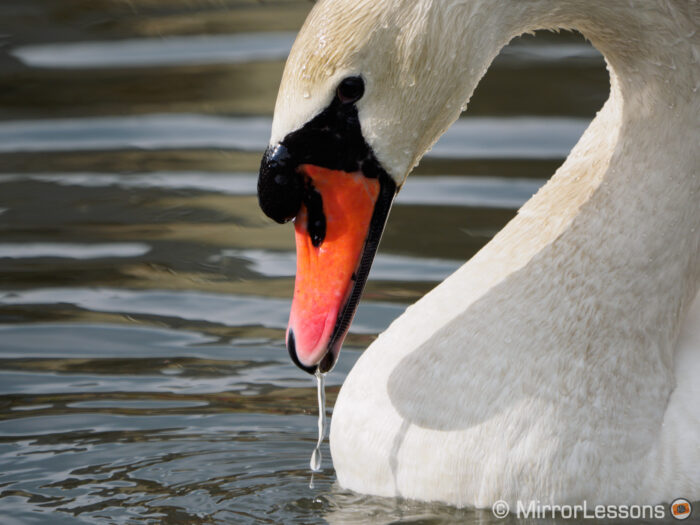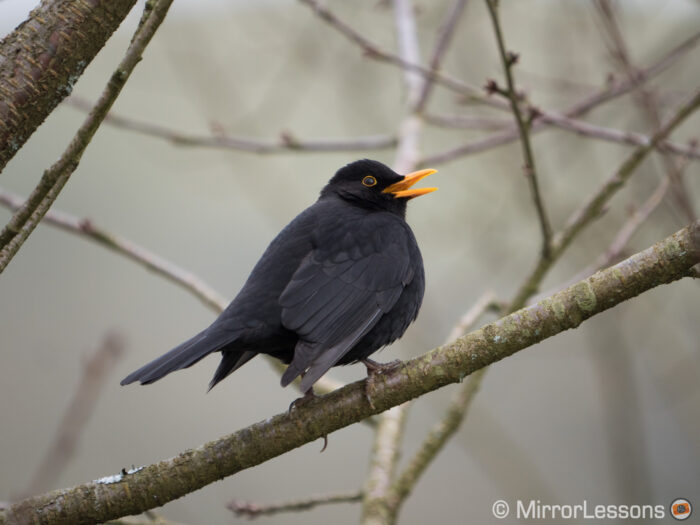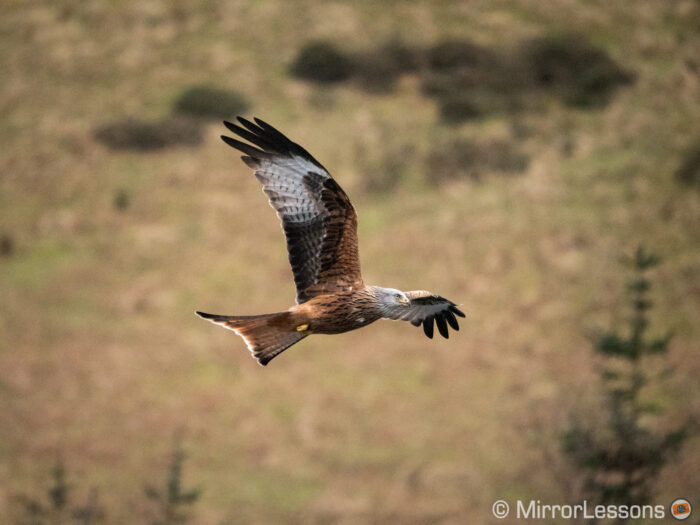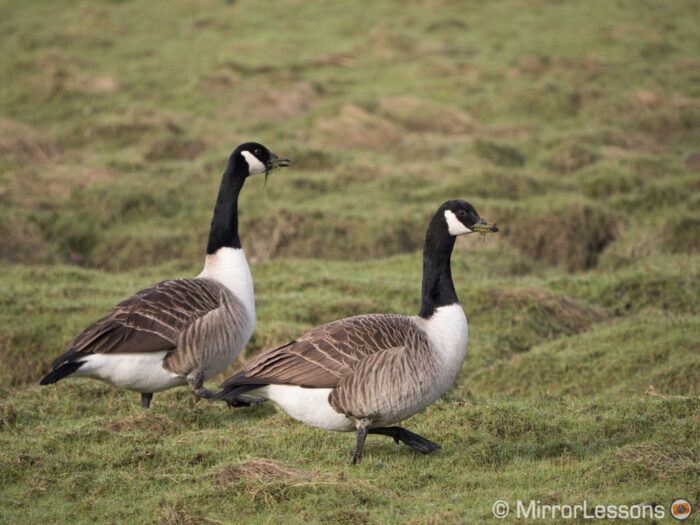Over the past few years, Panasonic and Olympus have put in considerable effort to build a reliable and versatile system for wildlife photography. Today users have access a good range of products when it comes to both cameras and lenses.
Up until now, the two companies have managed to release lenses that complement one another without competing directly in terms of focal length, aperture and size. For example, Lumix has a 200mm 2.8 whereas Olympus went for a 300mm f/4.
Both companies have a good arsenal of long zoom lenses too, but up until recently, it was Panasonic that also offered more premium products such as the 100-400mm and 50-200mm, both branded Leica. With this latest announcement, Olympus has added a zoom that goes in direct competition with the Panasonic equivalent.
Naturally, we decided to see how the two 100-400mm zooms compare and which one offers better value.
Ethics statement: Olympus UK sent us a copy of the 100-400mm to test. We rented the Panasonic lens to make our comparison. We were not asked to write anything about these products, nor were we provided with any sort of compensation. Within the article, there are affiliate links. If you buy something after clicking the link, we will receive a small commission. To know more about our ethics, you can visit our full disclosure page. Thank you!
Table of Contents
1. Main Specs
2. Design and ease of use
3. Optical quality
4. Image stabilisation
5. Autofocus and manual focus
6. Conclusion
7. Sample images
Main Specifications
Olympus M.Zuiko Digital 100-400mm f/5-6.3 IS ED MSC
- Mount: micro four thirds
- Format coverage: Four Thirds
- Focal length: 100-400mm
- 35mm format equivalent: 200-800mm
- Weather sealing: Yes
- Maximum aperture: f/5 (100mm) and f/6.3 (400mm)
- Minimum aperture: f/22
- Number of aperture blades: 9
- Angle of view: 12 – 3.1°
- Closest focusing distance: 1.3m
- Lens configuration: 21 elements / 15 groups
- Special elements: 2 High-Refractive, 4 ED, 2 HR and 2 Super HR elements
- Lens surface coating: Yes
- Maximum image magnification: 0.29x / 0.57x
- Optical stabilisation: Yes
- Dimensions: φ86.4mm x 205.7mm
- Filter diameter: ø72mm
- Weight: 1120g
Panasonic Leica DG Vario-Elmar f/4-6.3 ASPH.
- Mount: micro four thirds
- Format coverage: Four Thirds
- Focal length: 100-400mm
- 35mm format equivalent: 200-800mm
- Weather sealing: Yes
- Maximum aperture: f/4 (100mm) and f/6.3 (400mm)
- Minimum aperture: f/22
- Number of aperture blades: 9
- Angle of view: 12˚ to 3.1˚
- Closest focusing distance: 1.3m (100mm)
- Lens configuration: 20 elements / 13 groups
- Special elements: 1 aspherical ED, 1 UED and 2 ED lenses
- Lens surface coating: Yes
- Maximum image magnification: 0.25x / 0.5x
- Optical stabilisation: Yes
- Dimensions: φ83mm x 171.5mm
- Filter diameter: ø72mm
- Weight: 985g
Design and ease of use
There are many things to talk about when it comes to the design of these two lenses. Let’s start with the build quality.
I should start by saying that the Olympus lens is not part of the Pro series. You can recognise this by the predominant use of plastic on the barrel (only part of the rear, the mount and the tripod collar are made of metal). Another hint is the zoom and focus rings whose distinctive texture mimics other zoom lenses in the same line-up.
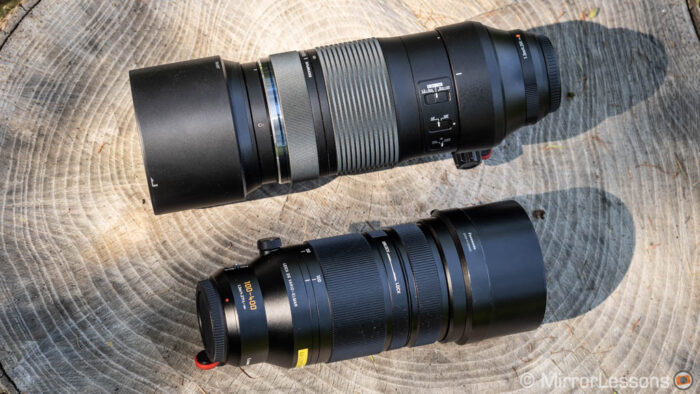
The Panasonic version has an all-metal build and has a higher quality feel. That said, the Olympus feels pretty solid and both lenses are completely weather-sealed.
The Olympus lens is larger as you can see from the images, but doesn’t feel that much heavier.
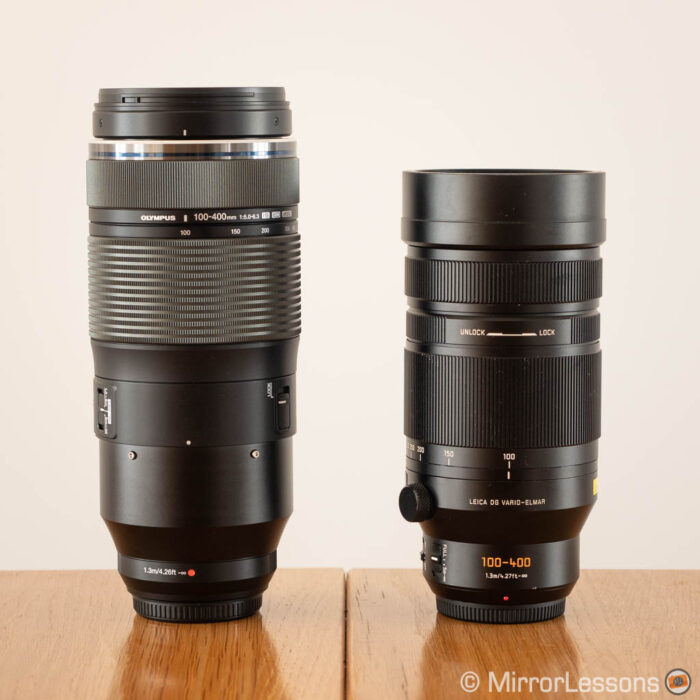
Both hoods are made of plastic, but the attachment differs. On the Olympus, you simply rotate and lock it, whereas the Leica has a small knob to secure it in place.
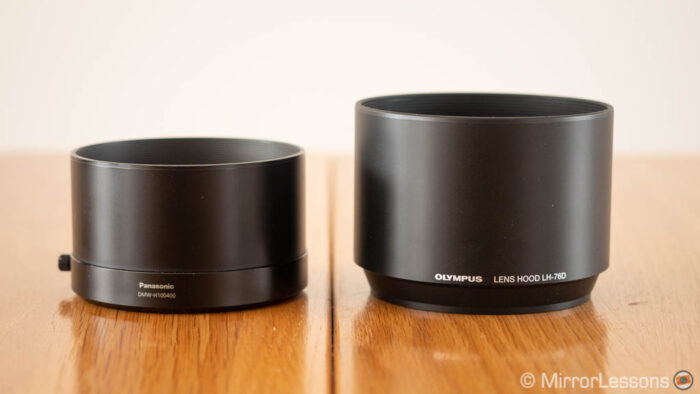
Interestingly, the Panasonic 100-400mm has a smaller built-in hood that can be extended when needed. It won’t provide as much shade as the bigger one, but at least the front element is not completely exposed when the main hood is not attached. The built-in hood complements the detachable one.
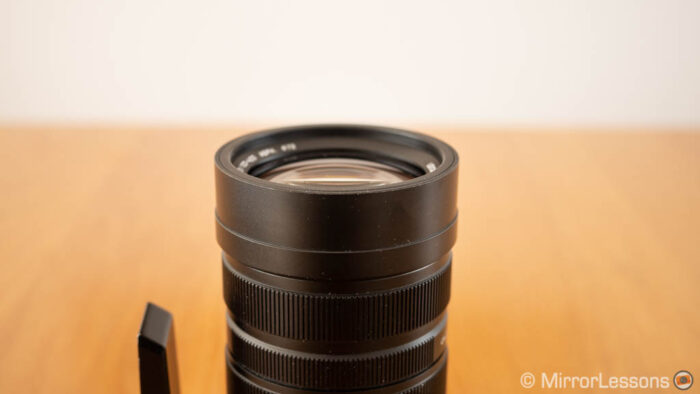
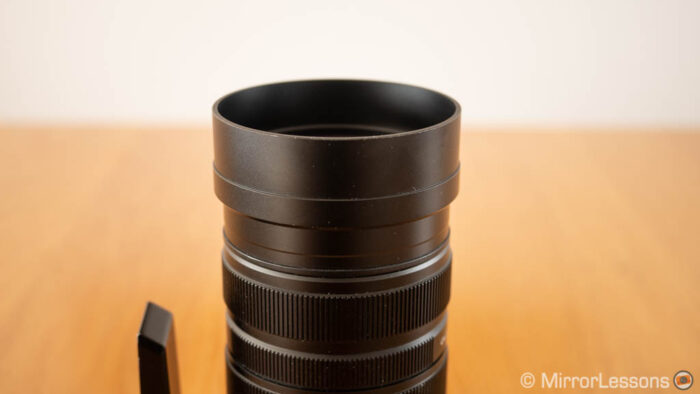
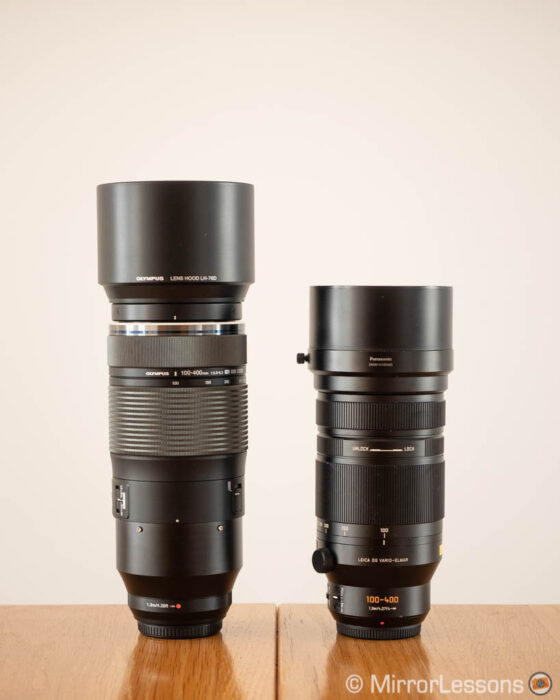
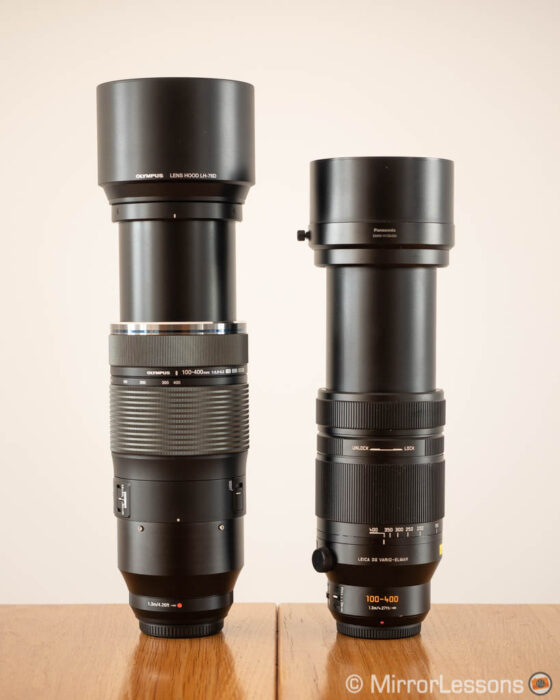
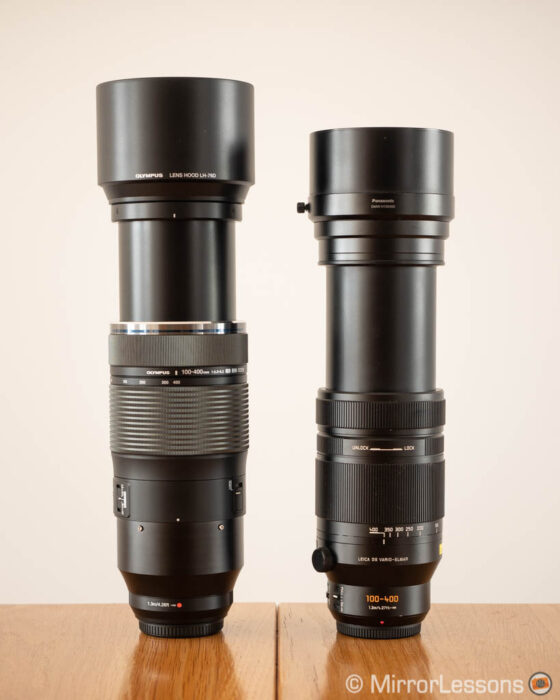
Both lenses feature tripod collars so that you can have a more balanced camera and lens combo. On the Olympus lens, the tripod mount and ring are a unique piece, whereas on the Panasonic/Leica you can unscrew the mount, which unveils a second 1/4” thread underneath. The Olympus mount is compatible with Arca Swiss attachments, so you don’t need to attach a plate if you have this kind of tripod.
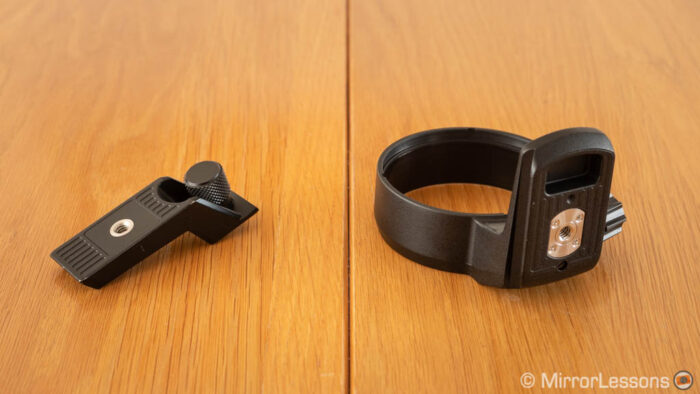
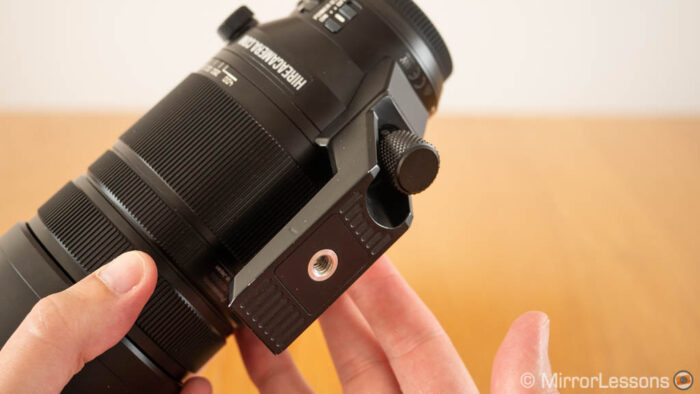
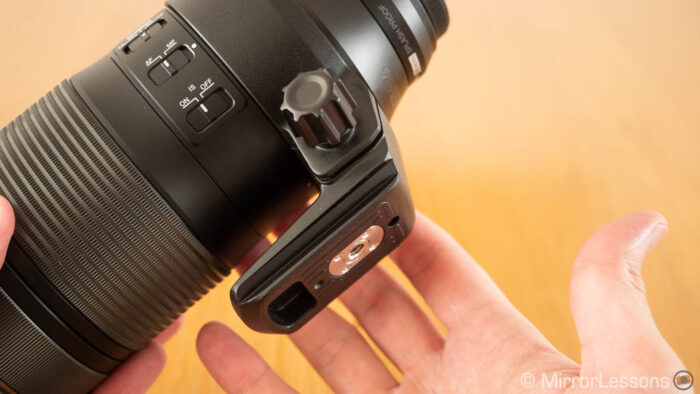
What I prefer on the Olympus lens are the focus and zoom rings. The zoom in particular is much smoother and nicer to use. The Leica 100-400mm has had a stiff zoom ring since the beginning, with some samples being worse than others. The focus ring is better but the Olympus remains more pleasant to turn once again.
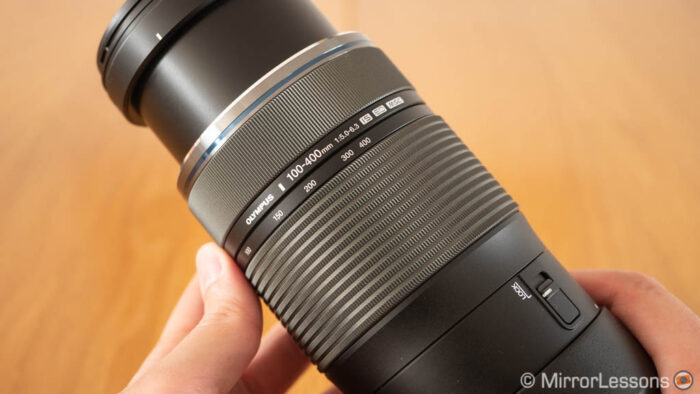
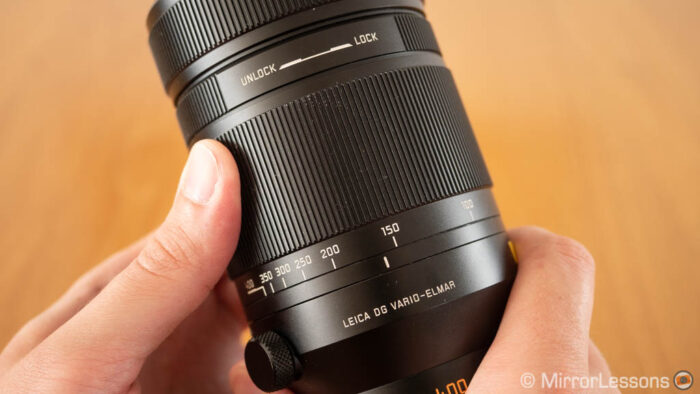
One positive thing about the Panasonic lens however is that you can lock the zoom in any position thanks to the dedicated lock/unlock ring. I’m pleased to see this working well on the sample I rented. On earlier models you could still rotate the zoom even with the ring in lock position. On the Olympus, the lock switch only works when the lens is retracted to 100mm.
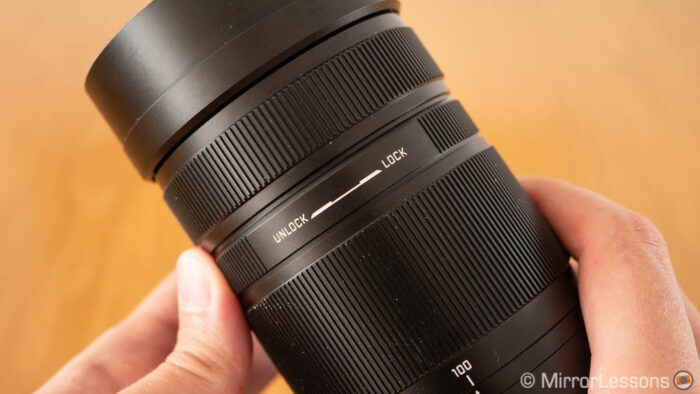
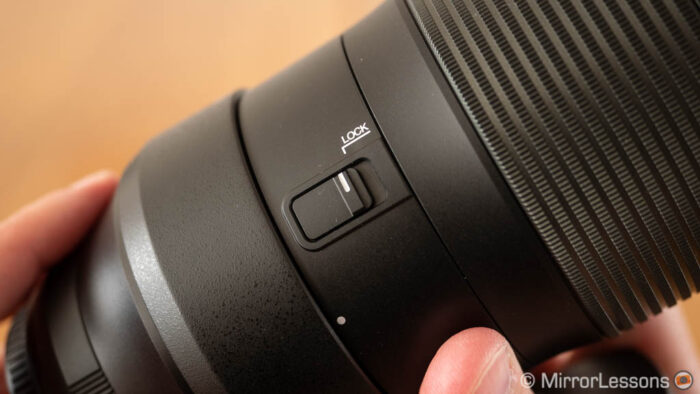
The M.Zuiko zoom has three switches on the side for the AF limiter, AF/MF toggle and to turn the stabilisation on or off. The same is found on the Leica DG lens, although the limiter switch has two positions instead of three. The trio of buttons is more centrally placed on the Olympus lens and I found them easier to access when composing with the camera.
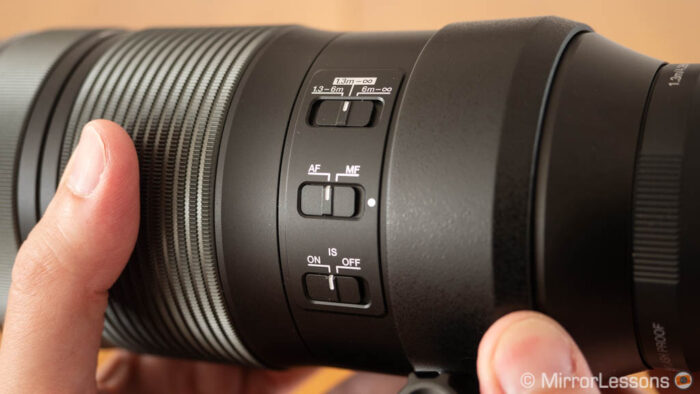
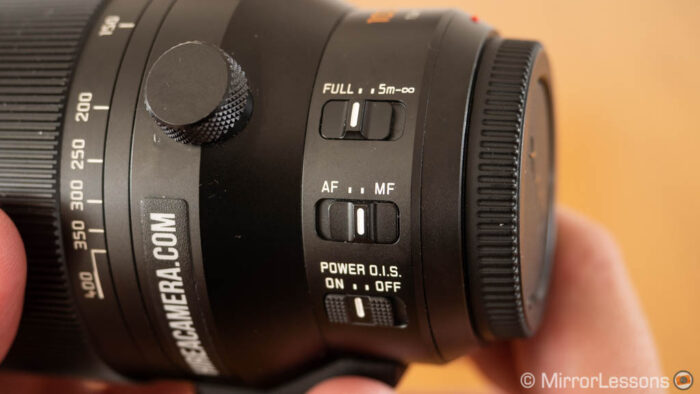
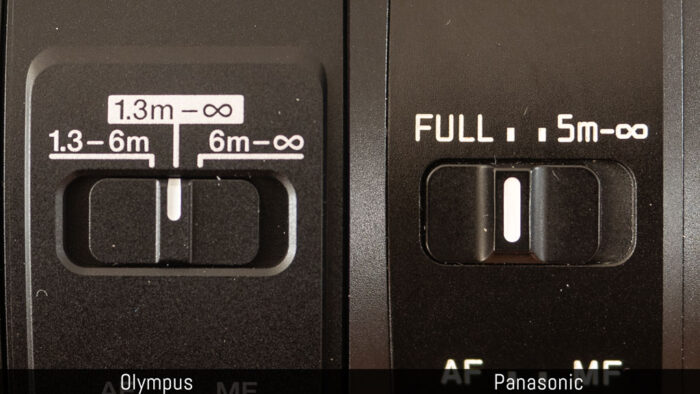
Note: recent Olympus cameras allow you to customise the AF limiter in the menu, bypassing the button on the lens. Make sure to leave the switch on the lens to Full (1.3m – ∞).
The only thing both lenses are missing is a customisable button on the lens barrel, which could be useful to engage the autofocus or stop it for example.
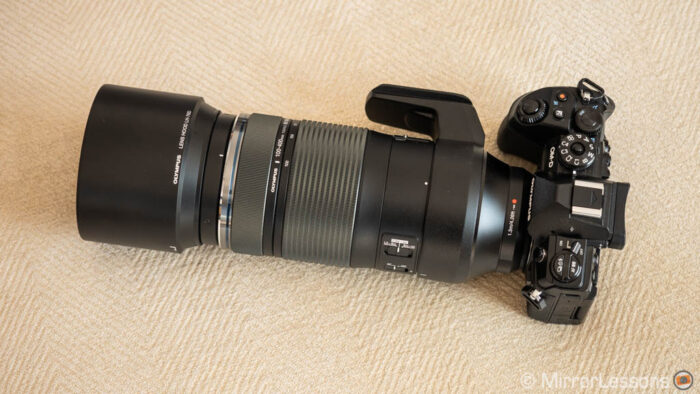
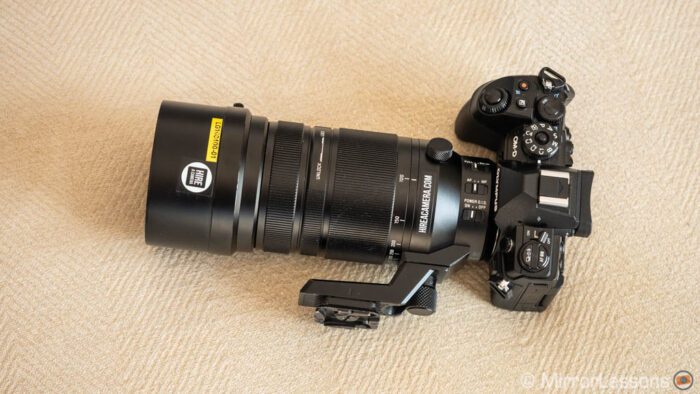
Optical quality
The two lenses have the same focal length range, from 100mm to 400mm, which is the same field of view as a 200-800mm lens on full frame cameras.
The first difference is the fastest aperture: the M.Zuiko goes from f/5 at 100mm to f/6.3 at 400mm. The Panasonic starts from f/4 and shares the same aperture at 400mm.
Below you can see the fastest apertures available at each key focal length:
Olympus:
- 100mm: f/5
- 150mm: f/5.7
- 200mm: f/5.9
- 300mm: f/6.3
- 400mm: f/6.3
Panasonic:
- 100mm: f/4
- 150mm: f/4.6
- 200mm: f/5.1
- 300mm: f/5.7
- 400mm: f/6.3
Note: on the Olympus, you can extend the reach with the MC 1.4x and MC 2.0x (1120 or 1600mm equivalent). The fastest aperture available becomes f/7.1-9 and f/10-14 respectively. Unfortunately I didn’t have them with me to test them on this lens.
Sharpness
With two lenses that share the same zoom range and similar apertures, one of the key differences we were hoping to find was optical quality. Let’s analyse our sharpness tests.

The stuff toy is 16cm high
At 100mm, starting with the lenses’ respective fastest apertures, the Olympus is sharper at f/5 than the Panasonic at f/4.
At f/5.6, the result is much closer, with the Olympus still having a bit of an edge.
At f/8, the quality is the same and the trend continues up to f/22. Diffraction only really kicks in from f/16, so f/11 is still very usable.
At 200mm, the Olympus is sharper once again at the fastest aperture. It maintains a small advantage at f/8, whereas from f/11 the results are pretty much the same. At f/22, diffraction seems a bit less severe from the Leica lens.
At 300mm, the Olympus is a bit sharper once again at the fastest aperture, then it is the Leica that has an advantage (albeit small) at f/8 and f/11. f/16 and f/22 are about the same and less sharp because of diffraction.
Finally, at 400mm, a similar trend continues. The Olympus is sharper at f/6.3, then the Leica catches up at f/8 and by f/11 the performance is basically the same.
Minimum focus distance
Both brands mention 1.3m as the minimum focus distance for these lenses but the magnification is higher on the Olympus, most likely because focus breathing is more pronounced.
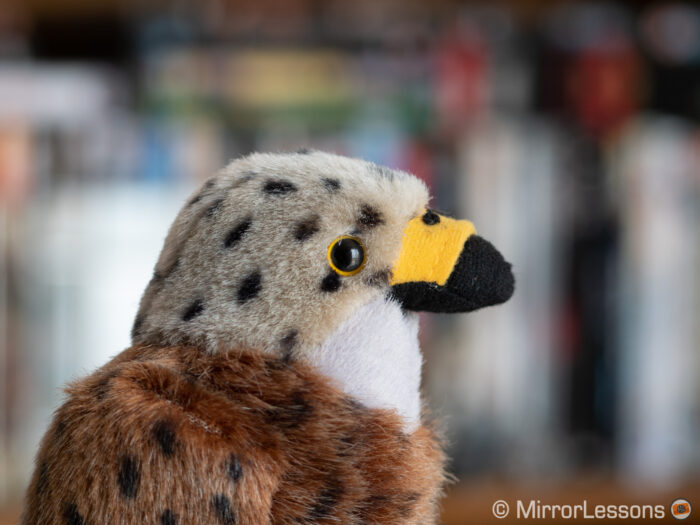
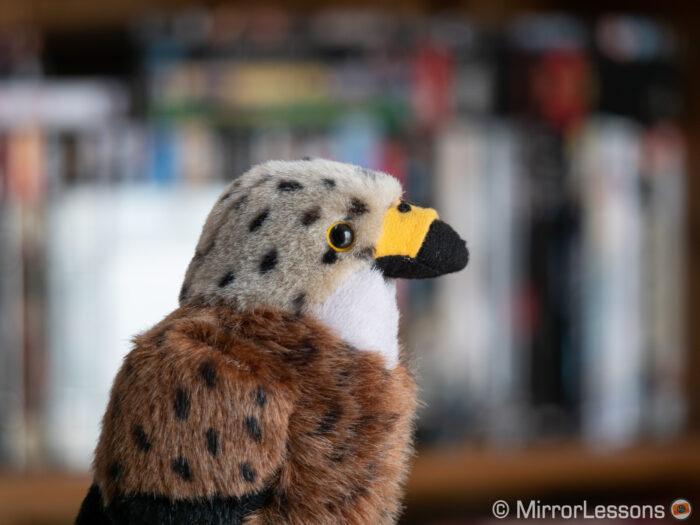
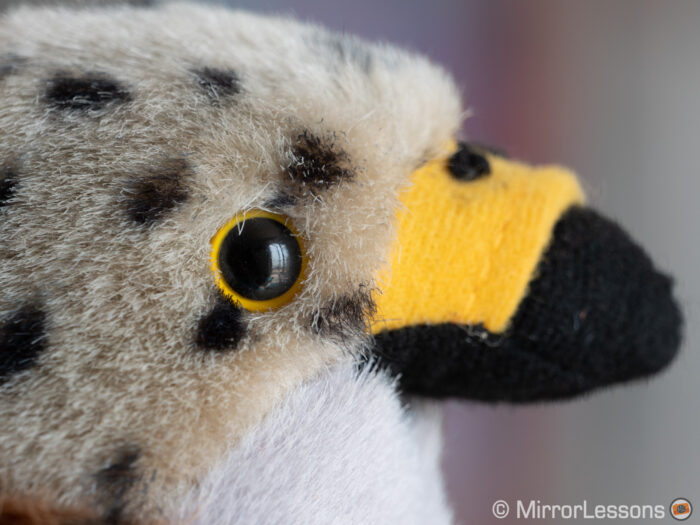
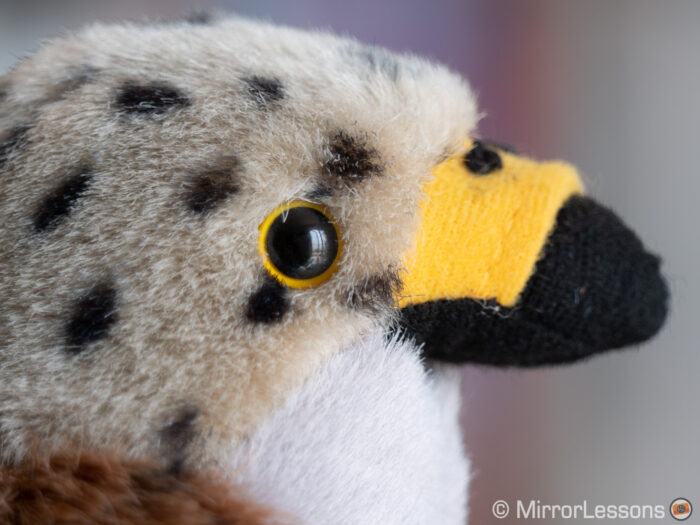
The Olympus is sharper at the fastest aperture, then the performance even out at the smaller apertures for both lenses.
Bokeh
The Panasonic lens has the advantage of a 2/3 faster aperture at 100mm which gives you a bit more shallow depth of field. But if we take a look at the bokeh characteristics, the Olympus maintains more plain and rounded balls across the entire frame, whereas the Leica design shows distinctive cat’s eye shapes at the edges.
At f/5,6, the bokeh balls on the Panasonic are already losing the rounded shape in favour of the nonagon design of the aperture blades, whereas the Olympus maintains more roundness and again the bokeh balls are more saturated and plain.

With distants subject at 400mm, the out-of-focus area can appear busy at times depending on the type of background. For example in the shot below, you can see how the out-of-focus rocks behind the bird are a bit distracting.
Another example with the Panasonic lens shows some out-of-focus branches with an unpleasant double line edge.
Flare
The M.Zuiko lens displays purple and yellowish ghost glares when exposed to direct sunlight, as well as some sensor flare (at least when paired with the E-M1 III).
The Panasonic has a hint of rainbow flare and greenish ghost flares, but the sensor flare is more subtle (again tested on the E-M1 III).
These are extreme examples, so unless you’re always shooting towards the sun, you’ll rarely come across these reflections.
Other characteristics
Neither lens presented a lot of chromatic aberration to deal with. I found some mild examples from the Panasonic lens at 400mm at 6.3 (I had to look for it though). I couldn’t find any trace from the Olympus lens.

Finally, there is some mild vignetting on the Olympus at f/5 and 100mm, which is almost gone by f/5.6. On the Panasonic, it is still a bit visible at f/8 but it’s far from being a problem.
At 400mm, they both display some vignetting at f/6.3, but at f/8 it is almost gone.
Image Stabilisation
Both lenses come with optical stabilisation but here we find a big and surprising difference.
The Panasonic Power OIS can be combined with in-body stabilisation on the sensor to further improve the performance. This is called Dual IS. You just turn on the stabilisation with the switch on the lens and the camera will combine the 5 axes on the sensor (of Lumix cameras that have IBIS) with the two axes on the lens. It is quite effective and very useful for video too.
Note: Dual IS works with Panasonic bodies and lenses only.
Olympus has a similar system called Sync IS, but surprisingly the 100-400mm is not compatible, unlike the 300mm Pro.
The IBIS on the body and the IS on the lens can be used independently. If you keep both active, the roll axis is combined with pitch and yaw on the lens. Although this means that sensor and optical stabilisation can work together, it is far less advanced that what Sync IS does where all the axes on the sensor shift are used.
The optical stabilisation on the Olympus lens has a rating of 3 stops of compensation (CIPA), which goes down to 2 or 1.5 when using the 1.4x or 2.0x teleconverters. There isn’t an official rating for the Panasonic lens on its own.
I first tested the optical stabilisation of each lens on their own to see how well the Panasonic performs without the help of sensor stabilisation, also considering that the longer the focal length, the more important optical stabilisation becomes.
To do this, I used the Panasonic lens on the Olympus E-M1 III since it is not possible to separate IBIS and OIS when the lens is mounted on the G9.
At 100mm, the performance is very similar. The first sharp result I got was with a shutter speed of 1/4s, but the keeper rate increases above 50% once you shoot with 1/15s or faster.
At 400mm, the Olympus shows superior performance. I achieved two good results at 1/8s, but keep in mind that the keeper rate improves with shutter speeds faster than 1/30s. The Leica lens struggled until 1/15s, and again the keeper rate increases with faster exposure times.
Dual IS with the Panasonic combo improved the performance with good results at 1/4s and 1/8s, where previously I didn’t get any good photos at all. The keeper rate is better from 1/15s.
Using IBIS (1 axis) and the IS of the Olympus lens with the E-M1 III didn’t improve the performance.
You feel the lack of Sync IS support for the Olympus lens when recording video and I admit I struggle to understand why the company made this decision. An E-M1 II or E-M1 III can work wonders when the 300mm Pro is attached. Even the original E-M1 worked well with that lens as you can see in the video below shot more than four years ago.
With the 100-400mm, the footage is less stable: any attempt to pan can result in lots of jerky movements. It’s not always bad if you manage to remain stable with your hands, or if you don’t record at 400mm, but you just feel that you could get more out of it.
The Dual IS of Panasonic is not as good as Sync IS with the Olympus but you can get more stable shots. It’s also a good idea to use some kind of support when filming with these long focal lengths anyway, not just to have more stable footage but also to allow your arm to rest a bit more.
A monopod is a good middle ground solution and that is what I used four years ago when testing the 100-400mm lens for the first time.
Note: quick apology but I realised I forgot to do some side-by-side stabilisation tests for video when I’d already sent the Olympus lens back.
Autofocus and Manual Focus
In terms of autofocus performance, both lenses feature a fast and silent AF motor. I’ve used the Pana/Leica lens on many occasions since its release four years ago, and on different bodies including GX8, G85, GH5, G9, E-M1, E-M1 II and most recently, the E-M1 III. It always performed well.
The M.Zuiko 100-400mm is really fast too, and in my tests it gave me the impression of being faster than the Panasonic overall. It performs a bit better on the E-M1 III than on the G9 but let’s not forget that the Panasonic camera has a different autofocus system (contrast detection DfD) that is limited when it comes to wildlife, especially for fast subjects such as birds in flight.
I usually go to my favourite testing site, the Red Kites feeding station, when I have long telephoto lenses to test. Unfortunately when I did this comparison, lockdown rules in Wales were still in force, the feeding station was closed and travel was not allowed, if not for vital necessities. So I resorted to doing some tests with seagulls in the town where I live.
The E-M1 III with the M.Zuiko 100-400mm gave me a keeper rate of 62% (perfectly sharp shots only) or 91% if I include slightly soft images. The E-M1 maintains a similar keeper rate when using the Panasonic lens, whereas with the G9 and both lenses, the rating is much worse (even below 50% if the bird is against a cloudy sky).
In manual focus, both lenses have a fly-by-wire focus ring and I find the one on the Olympus lens to be smoother. Also, I’ve noticed that it is easier to get accurate focus with the Pana lens when used on the G9 instead of the E-M1 III (probably because the electronic communication works better when you pair a camera and lens of the same brand).
Conclusion
The M.Zuiko 100-400mm is a recent addition to the super telephoto lens category of the vast micro four thirds system. It doesn’t disappoint in terms of sharpness where it does a better job than the older Panasonic Leica equivalent, especially at the fastest apertures. The zoom range is the same, but the Olympus is compatible with the 1.4x and 2.0x teleconverters, an option you don’t get with the competitor lens.
I prefer the design of the Leica lens in many ways: it is more compact, has a small built-in hood in addition to the removable one and a zoom locking mechanism that works at every focal length. It’s a shame that Panasonic has never managed to reduce the stiffness of the zoom ring. When you try the Olympus lens, you immediately understand what a smooth but firm ring should be like.
When it comes to stabilisation, the Panasonic is inferior on its own but matches the performance of the Olympus lens when using a Lumix camera compatible with Dual IS (sensor + optical stabilisation).
I’m a bit disappointed that Olympus didn’t give its lens Sync IS support when using a compatible OM-D bodies, as the performance could have been much better in my opinion, especially when recording video. Perhaps it is because it’s not a Pro lens and is less expensive, but stabilisation is the company’s most advanced feature, and in my opinion it should have been there.
Then we have the price. The Olympus is less expensive at $1500 / £1100 / €1300, whereas the Panasonic / Leica can be found for $1800 / £1200 / €1450 (prices as of August 2020, US prices without taxes).
Choose the Olympus 100-400mm if:
- you want better sharpness at the fastest apertures
- you want better optical stabilisation when using an Olympus body
- you want to use the teleconverters to get extra reach
Choose the Panasonic 100-400mm if:
- you want a more compact lens
- you want better stabilisation for video when using a Panasonic camera compatible with Dual IS
To consider:
- Olympus is preparing to sell its Imaging Business division (read more about this)
Reminder: the links below are affiliate links. If you decided to buy something after clicking the link, we will receive a small commission.
Sample images
Here is a selection of images taken with the two lenses. As I said earlier, I used the Panasonic lens on multiple occasions with various cameras in various locations, so I have a better selection.
With the Olympus lens, I tool pictures in the area where I live. We were still in lockdown because of the coronavirus, so I couldn’t visit some of my favourite wildlife locations.

